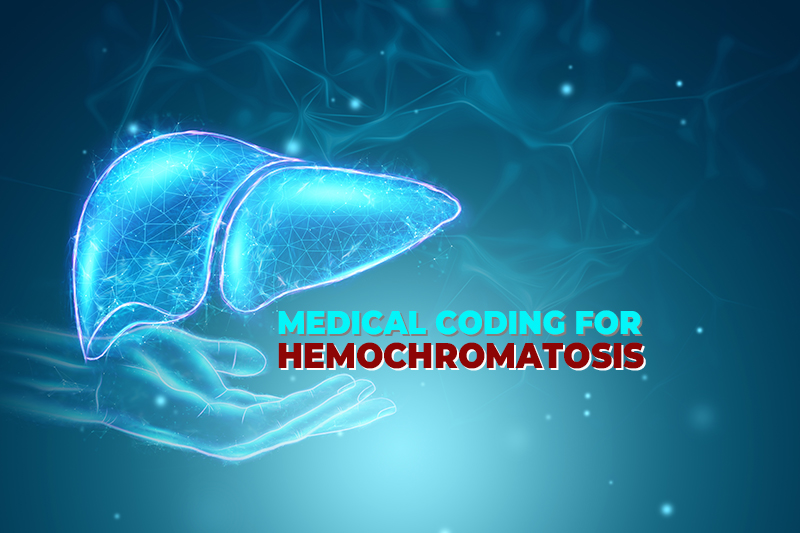Liver diseases can occur due to a several factors like infections, immune system disorders, drug overdose and alcohol abuse. Problems of the liver can be either inherited or genetic. Inherited liver diseases are a group of metabolic and genetic defects that specifically cause early chronic liver involvement. Hemochromatosis is one such inherited liver disorder that occurs when too much iron builds up in the body. The extra iron builds up in different parts of the body or organs, mainly in the liver. In this condition, the body absorbs too much iron and it finds no way to get rid of the excess iron, thus leading to excessive concentration of iron in the blood. If left untreated, too much iron buildup can lead to life-threatening conditions, such as liver disease, heart problems and diabetes. Physicians providing the necessary treatment need to make a correct diagnosis, causes associated with the condition. To code the diagnosis and treatment modalities correctly, they can rely on reputable medical billing companies.
Hemochromatosis is caused by a mutation in a gene that controls the amount of iron that the body absorbs from the food consumed. These mutations are passed from parents to children. Reports suggest that about 9 percent (about 1 in 10) of men with inherited hemochromatosis will develop severe liver disease. In most cases, people with hemochromatosis do not experience any noticeable symptoms. However, when symptoms occur they usually appear in midlife and include – low energy, joint pain, fatigue, abdominal pain and a low sex drive – which may vary from one person to another.
ICD-10 Diagnosis Code for Hemochromatosis
Hereditary hemochromatosis can be difficult to diagnose as early signs and symptoms often overlap with those of other common conditions. In fact, many people with the disease do not experience any signs or symptoms other than elevated levels of iron in their blood. Several tests like blood tests, liver biopsy (removing a sample of liver tissue for testing), MRI (to measure the degree of iron overload in your liver) and DNA test (testing for HFE gene) may be performed to confirm the diagnosis. ICD-10 code E83.1 denotes Disorders of iron metabolism category. E83.11 – Hemochromatosis is a billable/specific ICD-10-CM code that can be used on the medical claim to indicate a diagnosis for reimbursement purposes.
- E83.1 Disorders of iron metabolism
- E83.10 Disorder of iron metabolism, unspecified
- E83.11 Hemochromatosis
- E83.110 Hereditary hemochromatosis
- E83.111 …… due to repeated red blood cell transfusions
- E83.118 Other hemochromatosis
- E83.119 …… unspecified
- E83.19 Other disorders of iron metabolism
Treatment Procedures for the Condition
Physicians can treat hereditary hemochromatosis effectively by removing blood from the body (phlebotomy) on a regular basis. The amount of blood removed and how often it is removed depend on the age, overall health of the patient and the severity of iron overload. Another option is chelation – a developing therapy that can help manage iron levels, but is not a first-line treatment option. This treatment option helps the body expel excess iron through your urine and stools. Here are the CPT codes that can be used with an E83.11 diagnosis code for Hemochromatosis.
- 81256 – HFE gene analysis, common variants
- 99195 – Phlebotomy, therapeutic (separate procedure)
If left untreated, a person with hemochromatosis may have a higher risk of – liver damage, pancreatic damage, joint damage and pain, heart problems, skin discoloration and damage to the adrenal glands. The outlook for hemochromatosis varies. Therefore, early treatment and active management and monitoring of iron levels can help avoid the risk of complications. In addition, incorporating certain lifestyle measures or changes like avoiding the consumption of alcohol, having annual blood tests to monitor iron levels, and avoiding infections can help reduce the symptoms and improve the quality of life in the long run.
General surgery medical billing and coding can be challenging. Accurate clinical documentation of the causes, symptoms and treatment procedures is crucial to ensure accuracy in coding and billing. Experienced medical billing companies can help physicians assign the right medical codes for this inherited liver condition, and ensure optimal reimbursement.




